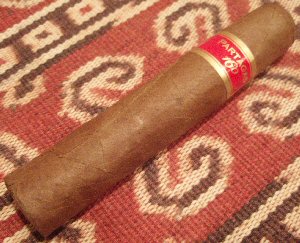
In keeping with Walt’s campaign of reviewing budget smokes for over-taxed wallets, I was planning on pulling some inexpensive cigars out of the humidor. But then I realized the special day called for a special cigar. And New Years seemed like a good time to light up one of those Partagas 160’s I’ve been hanging on to. But since the holiday is really two parts, the evening before and the holiday itself, why not smoke one for each? That way, I can both enjoy the cigars and get a review in? (Just look how well I rationalized all this.)
So what’s the big deal about the Partagas 160 anyway? The answer is the wrapper. These cigars bear a vintage 1977 Cameroon leaf that was originally used to make the well-spoken-of Partagas 150. Apparently they had some left over, so General Cigar decided to go for round two. Now I don’t know about you, but as the years go by, the opportunity to consume things as old as you are comes less and less frequently. I had to give them a shot.
Of course, that’s all fine and dandy, but the real question is whether or not this is a good cigar. And if it is, is it worth the premium price tag? Does such a geriatric leaf have anything left to give after all these years? That’s what I hope to determine with this review.
Cigar Stats:
Size: 4 1/2 x 48
Wrapper: 1977 Cameroon
Binder: Mexico
Filler: Dominican Republic, Mexico
Smoking Time: 1 1/2 hour
Beverage: water
Price: ~$18.50+
The Pre-Smoke
As I mentioned earlier, I lit up two of these elderly sticks to celebrate the holiday. The first I kept in a humidor at around 65% relative humidity, the second I moved to another running around 70%. I mention this here because the drier cigar did look and feel drier than the second. The second had the faintest sheen, while there was none on the first.
I found both cigars to be nice and firm to the touch. The second cigar was veinier and lumpier that the first. Both cigars had small rips in the wrapper at the foot that most likely was the result of the cigars bumping into other sticks in the humidor. (These smokes do not come with cellophane wrappers, which is kind of a shame given the delicate nature of the wrapper.)
Battle scars…
It wasn’t a big surprise that I had difficulty picking up the scent of the wrapper. You have to figure a leaf that old has to have mellowed a great deal. After a lot of sniffing (bordering on being ridiculous) I did get the faint odor of compost. I found the cold taste to likewise be a bit difficult. I never did get a good read on it.
The Burn
As you’d probably expect these cigars had a great burn. Inch plus ashes and a mostly straight burn line. I did notice a bit of flakiness in the ash of the second cigar, but only well into the final third, and nothing that compromised the structure of the ash.
Likewise the draw was nearly perfect. Though the more humidified cigar was just a little tight initially. The draw quickly opened up and was identical to the first in no time.
The Flavor
This is where it gets interesting. Remember I mentioned storing the two cigars at different humidities? Well it really made a difference in the flavor department. Generally speaking the drier of the two cigars had woodier flavors and was more subtle, while the other was creamier and a bit fuller.
In both cigars, the first third was syrupy sweet, sometimes tasting like caramel. In the second cigar, I got a flavor that was very much like a pear, while the first had more of a paper flavor.
The woodiness of the first cigar really started to pick up during the second third. And in the other, this is where the creaminess emerged. Both cigars had occasional pockets of cinnamon in this third.
In the final third the body started to pick up. Both cigars developed some leather notes in this third. The second cigar also picked up the woodiness that dominated the first cigar. But I was still in for a surprise. As I burned dangerously close to the toothpick in the final third, I got a roasted coconut flavor that was really intriguing.
The Price
When you consider the age of the tobacco, and the costs associated with maintaining it all these years, the price make sense. That being said, it’s really hard to justify shelling out a twenty for a cigar. Especially when you consider the plethora of fine smokes that can be bought for half the price.
Shiny! At these prices, this should be gold leaf!
The Verdict
To begin with, I really enjoyed this cigar. I think it really performs well in the flavor department at 70% relative humidity. (I was less impressed with the slightly drier smoke.) Ancient though it may be, there is still some flavor in those old veins. But not enough to justify the full retail price. These cigars, while good, strike me more as prestige smokes. The story behind the cigar outperforms the cigar itself.
The good news is that, while rare, these cigars are slow movers in some markets. I’ve run across them at a discount a couple of different shops locally. So you may have some luck at getting your hands on these at a more reasonable price. (Or at auction.) On a possibly related note, the rumor going around is that these cigars are not as good as the 150. I’d love to venture my opinion on that, but I’ve never had the 150. But it would explain the discounts.
Liked It: Yes
Buy It Again: Yes, but not at full retail price
Recommend It: Yes, if money is no object
The Tower of Burn
Here for your viewing pleasure is my trademark Tower of Burn.
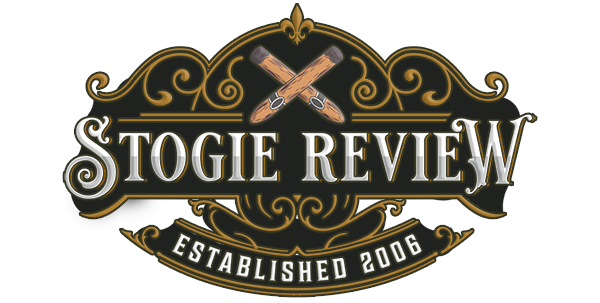

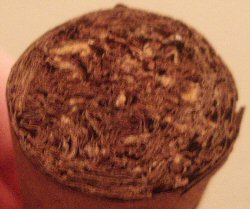
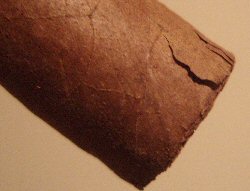
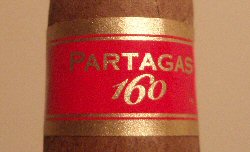












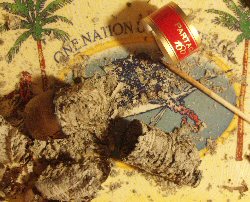

Great review Brian. I’ve been debating picking some of these up, but just can’t seem to justify the cost.
Thanks Cigar Jack,
My advice would be to look for a deal, and check the auctions. They’re good, but they’re not 20 bucks good.
Now I just gotta figure out a way to get my hands on a 150 for comparison without taking out a second mortgage!
These are excellent cigars. I’ve got one left from a stash that a friend gave me that I’ve had for over a year and will have to smoke up eventually. I won’t be buying more though, because I can’t justify the cost either.
Ricky,
Gotta agree with you, I enjoy these smokes, but can’t justify the high price tag, so I’m unlikely to buy them again. However, I don’t need to, I got a killer deal from a local B&M that really wanted to make some space for faster movers. 🙂
Thanks for the fine review. Really eager to burn one myself, but the local tobacconist is selling them at $26 a stick! I’ll just have to live vicariously until a previously unknown relative leaves me a small fortune…
Going to pick up a couple next time I am at th B&M…
I enjoyed reading your review Brian. I agree that these ancients have got to be kept at a higher humidity. I have smoked both the 150 and the 160. The 160 far out performs the 150 in all area–burn, draw, flavor, ash, feel, and color. The only problem I have in shelling out $20 for a 160 is finding one for $20! I can find them on-line at times for $20-$25 but in retail stores near me you can expect to pay upwards of $60 a stick for the 160 crystal if they have any.
I manged to get a box of the 160 at a considerable discount – they just didn’t sell here in town. It is one of the more interesting cigars I’ve smoked.
Then I found a five pack of the 150s. Even better than the 160. My third grandchild is coming next month and I will smoke a 150 in her honor..